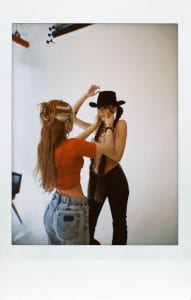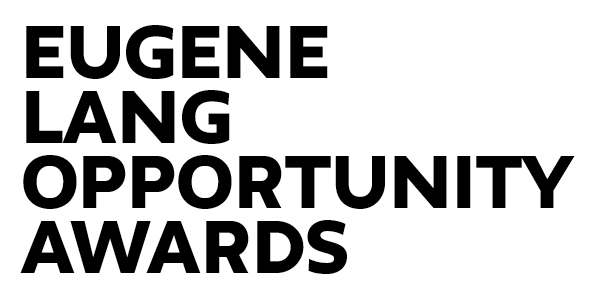Riley Boice (she/her), Journalism+Design, Minor: Fashion Communications
Creative
Project Description
Rodeo Magazine is the first edition of a small, independent fashion publication. I’m referring to it as a “coffee table magazine” – an art and photo-focused publication without ads. The magazine utilizes high quality printing, as this publication will be something someone would keep around the house for a while and maybe even display it! The genre of publication I have emulated in this project is usually published annually or quarterly. I am hoping to publish twice a year for now, and graduate to a quarterly cycle!
Rodeo Magazine features five editorial photoshoots with accompanying profiles of the creatives – photographers, designers – who helped to bring the project to fruition. The team included three other Lang and Parsons students who contributed photography, lighting and makeup! Collectively, the shoots highlighted the work of young, emerging clothing designers and up-and-coming photographers. The profiles will explore the inspiration and creative journey of each artist and attempt to address some of the challenges faced by young creatives in their respective industries.
What Form will your Final Project Take?
Printed magazine.
Who was supporting you in with work?
Anjali Khosla
How has this project has been impactful or transformative — for you personally or for those this work has impacted:
Originally, I planned to collaborate with a dear friend of mine from home who owns a small production company. She would have taken on a lot of the organization and logistics like tracking down and communicating with models, studios and collecting/managing materials. Essentially she would have relieved me of some of the time-consuming, tedious, non-creative aspects of the planning and execution of the project. Unfortunately, due to some personal struggles she was unable to fulfill those roles and failed to communicate well with me about her inability to complete her responsibilities. While this was extremely stressful, it forced me to learn more of the back-end of a project like this one which was a skillset I didn’t think I had but realized on the fly that I knew and was capable of more than I thought I was! I’ve worked on a lot of sets, but usually as a model or stylist, so I figured it was best for me to bring in someone who knew more than I did about the logistics of getting a shoot from concept to execution. But, I learned throughout the process that I do have the skills and knowledge to do the back-end work and that knowing that process makes me better at the creative side of things where I am comfortable.
What would you do differently? How would you advise a student who is going to do something similar?
Ultimately the project went almost exactly as planned, aside from the story I shared above. I think if I had to do it over again, first and foremost I would give myself more time to execute a project of this scale. And second, I would be more explicit about the expectations for each person and what they should expect to receive back from me for participating in the project. I would probably create a really simple contract to make it clear what assets from the project are fair game for use by everyone.
Are you going to publish or print your work? If so, where?
Yes, independently
Read a sample here.


Short summary
Overall this project was extremely challenging and forced me to grown substantially in areas I had not expected to have to. The project was very rewarding and I’m grateful to have gotten the opportunity to do it with support from the school.
